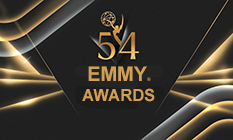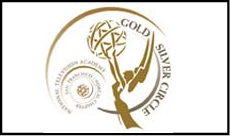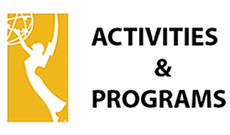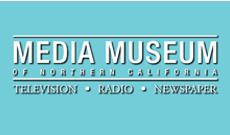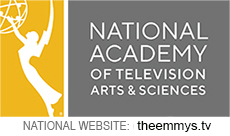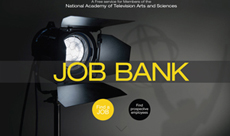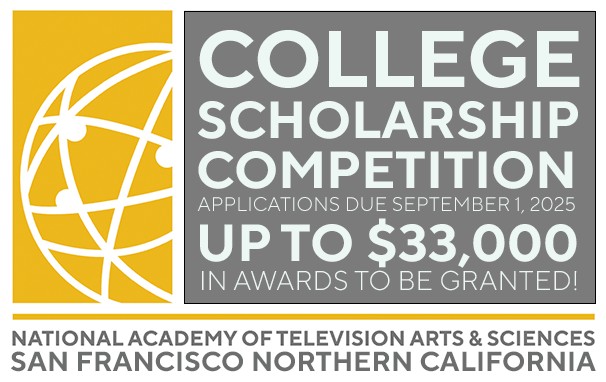2025 COLLEGE SCHOLARSHIPS
APPLICATION DEADLINE:
SEPTEMBER 1, 2025
Scholarships will be awarded at the Gold & Silver Circle Induction Luncheon on Saturday. October 18, 2025 at the Basque Cultural Center in South San Francisco.
SCHOLARSHIP FAQs
Q: Who can enter?
A: The scholarship program is run by the San Francisco/Northern California Chapter of the National Academy of Television Arts and Sciences for the benefit of college students in the region. Students who are enrolled in a two or four-year college or university in the region which encompasses Northern California, Reno, Hawaii and Guam are eligible. Additionally, students who live in the region but are studying at a college or university outside the chapter area may also apply.
Q: How much scholarship money is available?
A: The Chapter may award up to $33,000 in scholarships each year to deserving student applicants. Scholarships are awarded in amounts of either $3,000 or $5,000. The Chapter offers a total of nine scholarships that have been created to honor distinguished members of the academy in our region. The Education Committee will select from the top student applicants and award one, two or possibly no recipients for each scholarship.
Q: Why is the application deadline so early?
A: This year’s scholarship application deadline is September 1, 2025. We understand that this is an uniquely challenging time for applications to be due as or perhaps before the Fall semester begins. The scholarships will be awarded at the Chapter’s annual Gold & Silver Circle Induction ceremony on October 18, 2025. So, everything in the scholarship competition is back-timed from that date. The event celebrates both veteran journalists for a career worth of accomplishments as well as up-and-coming student scholarship recipients.
Q: Can you win more than one scholarship?
A: Technically, the answer is yes. It is theoretically possible but unlikely. The Education Committee’s goal is to identify a deserving student whose application, ability and talents match each of the nine available scholarships. A rare and exceptional student could, in theory, win the Louise Jorjorian Memorial Overall Excellence Scholarship in addition to one of the other available scholarships. That has not, however, happened in recent memory. But one can always dream and dare to impress.
Q: How do you decide who wins?
A: Each application will be reviewed and scored by five to seven judges from the Chapter’s membership. Judges will consider the strength and quality of a student’s applicant: Personal Statement & Short Form Essays, Video Submission, Transcript and Letter(s) of Recommendation. Each application has a total possible score of 100. The Education Committee will review the top applicants and determine the appropriate scholarship award.
Q: Are there rules about how the scholarship money can or cannot be used?
A: The short answer is no. We think it is advisable to use the money for your educational or professional journey. But there are no strings attached. How each recipient decides to use the scholarship money is left to his or her discretion.
Q: Do you have to be a journalism or film major to apply?
A: No, the scholarship program is open to all college students who satisfy the eligibility requirements. However, because there is a required video submission the competition does lend itself to students with a broadcast journalism, documentary or film background. But it is not limited to students in those degree programs.
Q: When will we know who won?
A: The scholarship plaques and checks will be awarded in person on October 18, 2025 at the Chapter’s Gold and Silver Circle Induction Ceremony. The Education Committee will notify student recipients in late September or early October that they have won a scholarship. That notification will then be followed by an announcement to the general membership of the chapter.
For more information, contact:
Devin Fehely, Scholarship Chair: devin.fehely@mac.com
Steve Shlisky, Acting Executive Director: office@emmysf.tv
SCHOLARSHIPS
 Robert Kekaula
Robert Kekaula
Hawaiian/Pacific Islander
Student Scholarship
To the undergraduate Hawaiian/Pacific Islander student ($5,000)
Underwritten by Janice S. Gin
KITV’4s Robert Kaleimomi Kekaula, suddenly passed in June 2021. He was the Managing Editor at the station, played a considerable role in the lives of many colleagues, and touch the hearts of many in the community. Always dressed in an aloha shirt and shorts, even on air, Kekaula was considered TV Titan in Hawaii. He was proud to represent Native Hawaiians and its culture and values.
Kekaula was O’ahu-born, spent his boyhood in Kailua-Kona and graduated high school from Kamehameha in 1983. Kekaula started attending classes at the University of Hawaii at Manoa. But as he said, he took the “scenic” route, finally graduating from UH in 2008 with a Bachelor’s Degree in Communications.
Described as a ‘warrior,’ during his time at Island News, Kekaula worked on and off-air, serving as a role model, mentor and coach to those whom he worked closely. His broadcast career started in radio in 1986 at KHVH. His first job in television came in 1987, at KGMB, as a weekend sports producer. In 1989, Kekaula joined the KITV staff as a weekend sports anchor/reporter. He left for KHNL in 1994, only to return to KITV in 1997 as sports director. In 2017, Kekaula became the nightly news co-anchor sharing the desk with Paula Akana. In 2020, Kekaula took on a news management role to become the Managing Editor at KITV.
The local newspaper wrote, “the multi-talented Kekaula was best known for his decades-long career as a sportscaster, where he delivered reports with the vibrancy to match his bright custom-tailored aloha shirts.” He had been the color commentator for the University of Hawaii football games on radio and television from 1992 to 2010. In 2011, he was named the TV play-by-play voice of the Warriors. They say his contacts were so strong in the UH sports community that colleagues nicknamed him the “General Manager.”
As a singer and songwriter, Kekaula shared his talents with island fans, recording three solo albums: “Kanak Attack,” “Daddy’s Little Girl,” and ” about Everyday People”. In addition, he owned his own music production company, “A Guava Ding Thing,” also serving as Executive Producer on three other recordings, two of which won numerous Na Hoku Hanohano honors (top island music awards).
Kekaula was a prolific creative writer. He produced many noteworthy news and sports TV specials. In 2020, he was nominated for a regional EMMY for writing and storytelling.
 FRED ZEHNDER Memorial
FRED ZEHNDER Memorial
UNDERGRADUATE JOURNALISM Scholarship
to the outstanding undergraduate journalism student ($5,000)
Underwritten by Friends of Fred Zehnder
Fred Zehnder dedicated his life to journalism, working in newspapers, radio and broadcast television news. He died unexpectedly in 2021 at the age of 87 and was still working 40-plus hours a week as the publisher of his two weekly newspapers in the East Bay.
Fred began his broadcast career as an assignment editor, cameraman, editor and producer at TV and radio stations in Northern California. He was committed to fair, ethical journalism, and he instilled those standards in everyone who worked for him. For an unheard-of 21 years, from 1978 to 1999, Fred was News Director at KTVU Channel 2 in Oakland, then owned and operated by Cox Communications. He selected people who didn’t always fit the mold for on-air and behind-the-camera jobs. Fred looked for people who shared his passion for solid television journalism. The formula worked. His newsroom became highly respected and consistently drew the highest ratings and local, state and national broadcast awards. Under his leadership, “The 10 o’clock News” became the No. 1 prime-time newscast in the country.
This scholarship was created to honor the man who launched and nurtured hundreds of careers and who was revered by the people who worked for him, with him, and those who wished they could have been part of what he created.
We are looking for journalists who would be honored to receive the Fred Zehnder Memorial Undergraduate Scholarship and will carry forward the kind of journalism Fred championed
 LOUISE JORJORIAN Memorial OVERALL EXCELLENCE Scholarship
LOUISE JORJORIAN Memorial OVERALL EXCELLENCE Scholarship
to the outstanding overall student ($5,000)
Beloved broadcaster Louise Jorjorian established her life and career in San Francisco in radio and television, landing her first job as Publicity Manager for KGO radio, and then became Promotion Director for KSFO Radio, where she worked for 25 years.
 LINDA GIANNECCHINI Memorial PROFESSIONAL Development Scholarship
LINDA GIANNECCHINI Memorial PROFESSIONAL Development Scholarship
to the outstanding professional returning to complete degree ($3,000)
Linda Giannecchini is our most renowned local and national NATAS leader. She previously served as National Vice Chairman, Vice President, Secretary and Trustee. Locally, Linda is a past President and chaired the Awards, Scholarship and Speakers’ Bureau Committees. Linda currently serves as Co-Chair of the Media Museum of Northern California Consortium, and the Archives/Museum Committee. She’s an Emmy® award recipient, member of the Silver Circle, class of 1997, recipient of the 2011 Governor’s Award and 1990 Governors’ Service Medallion.
 JERRY JENSEN Memorial
JERRY JENSEN Memorial
Graduate Journalism Scholarship
to the outstanding graduate journalism student ($3,000)
Jerry Jensen anchored News Scene 7 on KGO with Van Amburg for more than ten years until his death on March 26,1984. Jerry died of pancreatic cancer at the age of 49. Jensen joined KGO-TV in 1969 as the weekend anchor. Prior to channel 7, he anchored at KBHK and KRON. Jerry was awarded the NATAS Governors’ Citation in 1968.
 “MISS NANCY” BESST Memorial GRADUATE Production Scholarship
“MISS NANCY” BESST Memorial GRADUATE Production Scholarship
to the outstanding graduate production student ($3,000)
“Miss Nancy” Besst, one of the founding members of the NATAS Northern California Chapter, started her career in Baltimore, MD as a staff teacher for Romper Room. Moving to San Francisco she became “Miss Nancy” on Romper Room from 1958-1969. She hosted many programs on KQED, KGO, KRON and KBHK. Nancy is a member of the Silver Circle, 1988, and has received the Governors’ Service Medallion, 1994; Governors’ Citation, 1996, and the Governors’ Award, 1998.
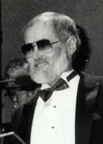 SHELDON “SHELLY” FAY Memorial UNDERGRADUATE Videography Scholarship
SHELDON “SHELLY” FAY Memorial UNDERGRADUATE Videography Scholarship
to the outstanding undergraduate videography student ($3,000)
The family and friends of Shelly Fay started a scholarship to an outstanding videographer. Shelly was a multi-talented television professional who worked in the San Francisco Bay Area as a producer, photographer, director and editor for more than 25 years, mostly at KPIX-CBS5.
 RIGO CHACON UNDERGRADUATE REPORTING Scholarship
RIGO CHACON UNDERGRADUATE REPORTING Scholarship
to the outstanding undergraduate student in news reporting ($3,000)
Multiple Emmy® award-winning television reporter Rigo Chacon, now retired, worked at KGO-ABC7 for 29 years as a general assignment reporter and opened the first Santa Clara County bureau of a San Francisco-based TV station. Among his many honors, Chacon is a member of the Television Academy’s prestigious Silver Circle. He Received the Governors’ Award i 2003. Rigo and his wife Lucy offer student scholarships thru their foundation Abrazos and Books.
 PETER J. MARINO, JR. Memorial Undergraduate Production Scholarship
PETER J. MARINO, JR. Memorial Undergraduate Production Scholarship
to the outstanding undergraduate journalism student ($3,000)
Peter Marino was a stalwart member of the Chapter and co-founder of the Scholarship Program. He was well known for his public relation exploits, and as a music and video producer. Marino was a principle in a Bay Area recording studio and represented several recording companies. This scholarship covers a variety of production job disciplines.
APPLICATION DEADLINE:
MONAY, SEPTEMBER 1, 2025
NOTE: The San Francisco/Northern California Chapter Scholarships are for college students only. High school students may also apply for the NATAS Chapter High School Student Awards of Excellence. Contact the NATAS office for more information at 650-341-7786.
Scholarships Donations:
TV ACADEMY FUND, INC.
4317 Camden Avenue
San Mateo, CA 94403-5007
The TV Academy Fund is a 501(c )(3) nonprofit charitable organization.
#94-3172275


